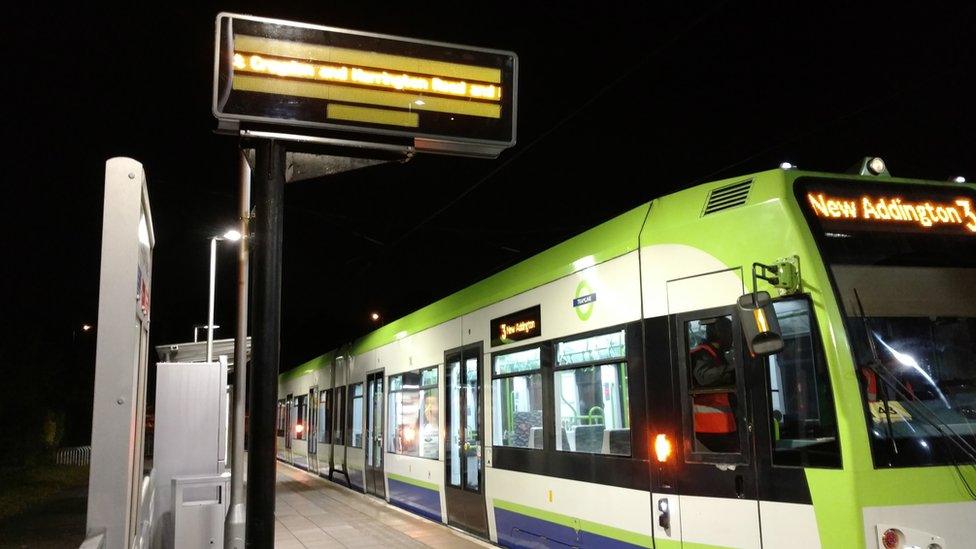Croydon tram crash: Driver 'doing 43.5mph in 12mph zone'
- Published
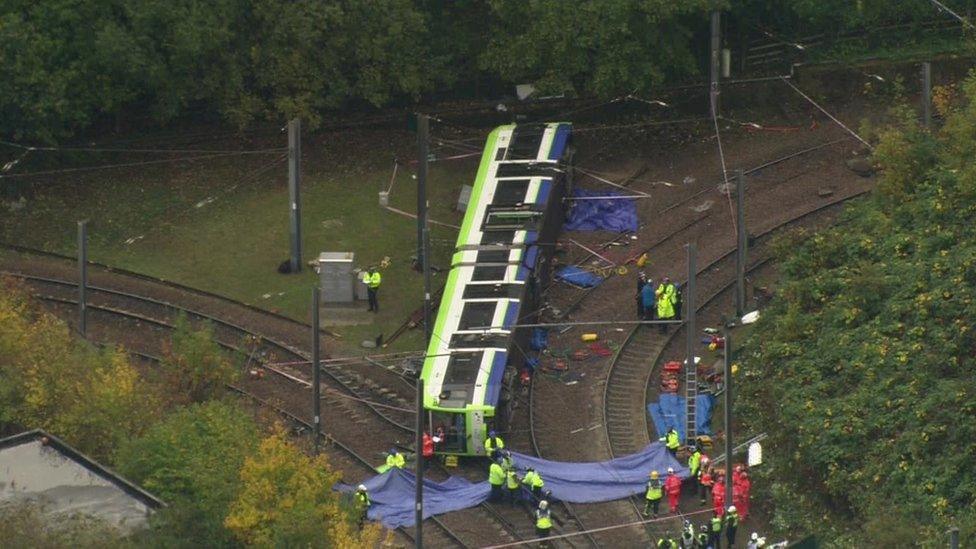
The report said the brakes and track were not faulty
The tram that derailed in Croydon killing seven people was travelling at three and a half times the speed limit, investigators have said.
The Rail Accident Investigation Branch (RAIB) said the tram, which was carrying about 60 people, was travelling at 43.5mph in a 12mph zone.
In its interim report,, external it said there was no evidence of any track defects, or obstructions on the track.
The investigation also found no malfunction of the braking system.
The tram derailed last Wednesday morning shortly after coming out of a tunnel with a 50mph speed limit.
TfL has offered to pay for the funerals of those who died but came in for criticism after it was revealed the families had not been told about it in person.
Croydon tram crash: Who were the victims?
Investigators have released their interim report into the Croydon tram derailment.
Initial analysis shows the driver, Alfred Dorris, did apply the brake after coming out of the tunnel but only enough to reduce his speed from 50mph out of the tunnel to 43.5mph. The tram travelled 25m before stopping.
Mr Dorris, from Beckenham, south-east London, has been arrested on suspicion of manslaughter and released on bail until May.
It is understood that establishing if the 42-year-old, who has worked for First Group since 2008, was asleep or had blacked out are lines of inquiry.
BBC London Live: Latest updates
The seven people killed in the crash were Dane Chinnery, 19, Philip Logan, 52, Philip Seary, 57, Dorota Rynkiewicz, 35, and Robert Huxley, 63, all from New Addington, and Mark Smith, 35 and Donald Collett, 62, both from Croydon.
A further 51 people were taken to hospital, with eight of them suffering injuries described by London Ambulance Service as serious or life-threatening.
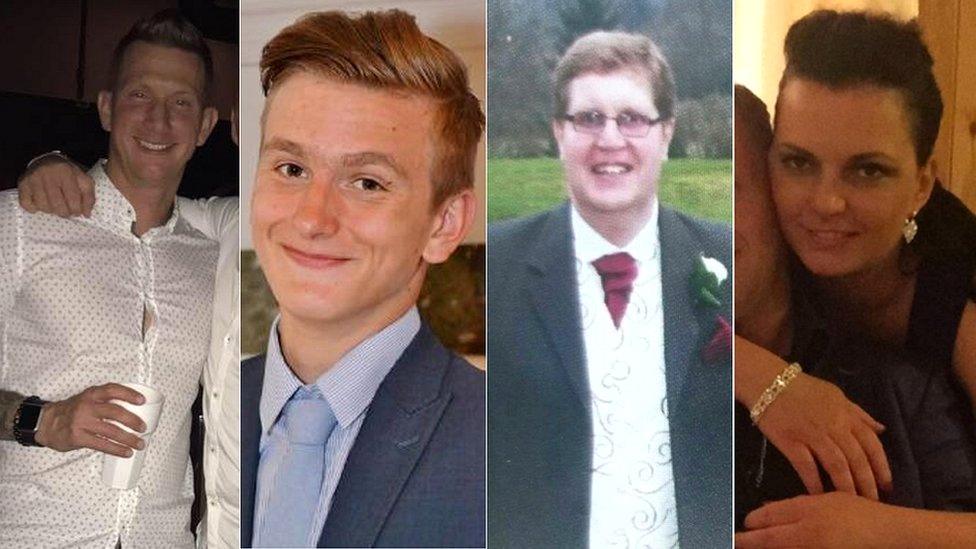
Mark Smith, Dane Chinnery, Phil Seary and Dorota Rynkiewicz (l-r) all died in the crash

Philip Logan (left), Donald Collett (centre) and Robert Huxley (right), also died
The RAIB said factors that led to the speeding were still under investigation and it has advised London Trams and Tram Operations Ltd to put speed restrictions in place before the bend out of the tunnel.
Mike Brown, London's transport commissioner, said: "We will follow the RAIB's advice and, before service is resumed, will implement additional temporary speed restrictions and associated signage near Sandilands to supplement existing safety arrangements.
"We are continuing to carry out a thorough safety assessment and are taking the advice of an independent panel of tram experts.
"We will only resume services for the local community once that rigorous assurance process has been completed."
The report also found:
At the time of the accident it was dark and raining heavily
CCTV was not working at the time of the derailment
The right side of the tram, which made contact with the ground, was severely damaged
The tram would have had to begin braking 180m before the 12mph speed restriction sign to get the speed down
Aslef, the train drivers' union, said it was "clear that the lack of adequate safety systems were at the root of this dreadful accident".

Analysis by Tom Edwards, BBC London Transport Correspondent

It wasn't a surprise that the tram was going 43.5mph but it is still shocking nonetheless - that is three-and-a-half times the 12mph speed limit.
The report says further speed limits should be imposed, and the mayor has said it will happen at three other sites on the tram system where they've identified - we can presume - similar issues of speed on bends.
What will be particularly worrying to commuters is why did it take this horrendous tragedy to identify these places?
This has also gone political. The unions, quiet until now, have broken their silence. They think this was down to a lack of safety equipment.
Aslef also thinks Tramlink should be brought back under TfL's control and there are serious questions that previous incidents were not investigated properly.
This whole terrible incident seems to be escalating politically and the answers are months away.

District organiser Finn Brennan said a system to make sure trams travelling too quickly in a potentially dangerous area could be slowed down and stopped should be put in place, as on the mainline railway and London Underground.
"If it had been then this awful event could have been avoided," he said.
Croydon Central MP Gavin Barwell thanked the RAIB for the speed the report had been released, adding the recommendations "should be very helpful in providing reassurance" to passengers once services resume.
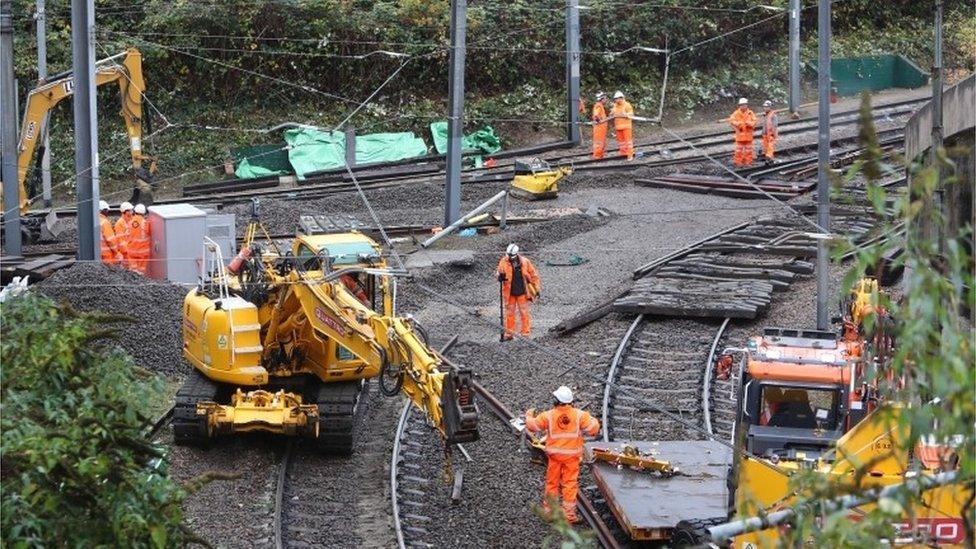
The report recommended that the speed limit be lowered
The Office of Rail and Road is carrying out its own investigation into whether safety rules were being followed.
Chief inspector of rail accidents Simon French said the inquiry would look at the wider context of the accident, including the sequence of events, the way the tram was driven, the infrastructure and how people were injured.
"We will also be looking into previous occurrences of over-speeding in this area and underlying management issues," he said.

The mayor of London has apologised after it was revealed the families of those who died were not initially told TfL had offered to pay for the funerals.
Mr Logan's widow Marilyn, said she only heard about it "through the grapevine" and then only received a non-personalised letter that did not include any names.
"It was as if TfL was saying 'Well it's happened, we'll pay for the funeral, now go away and be quiet'", she said.
Sadiq Khan said it "was not good enough" and TfL had to "make sure we learn lessons where we can".
He has also now contacted the families personally.
- Published16 November 2016
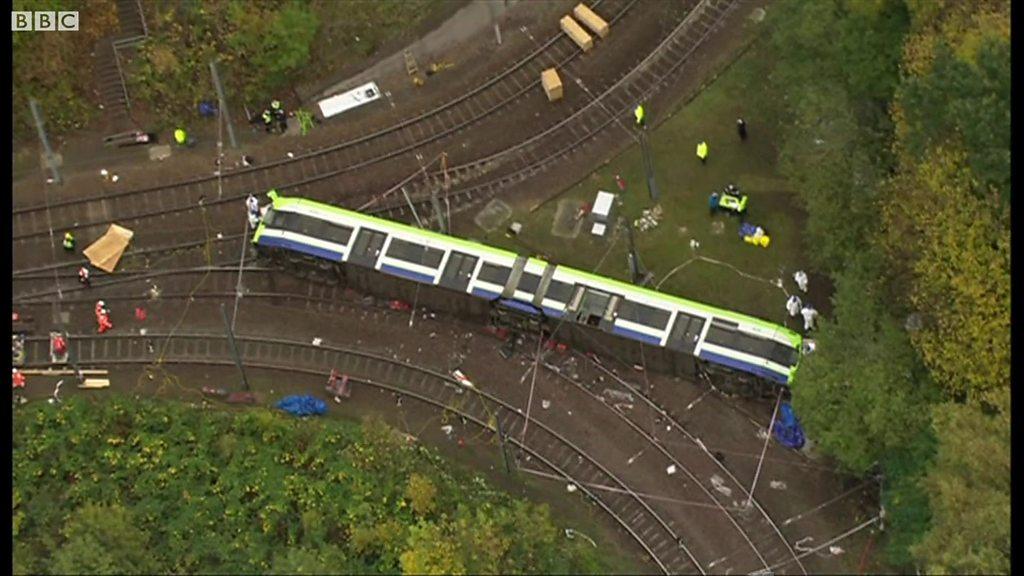
- Published16 November 2016
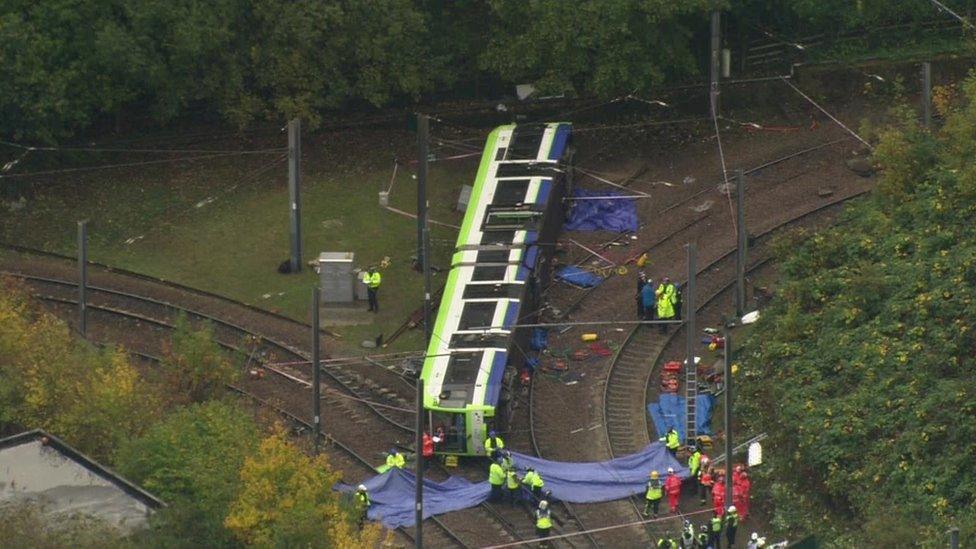
- Published14 November 2016
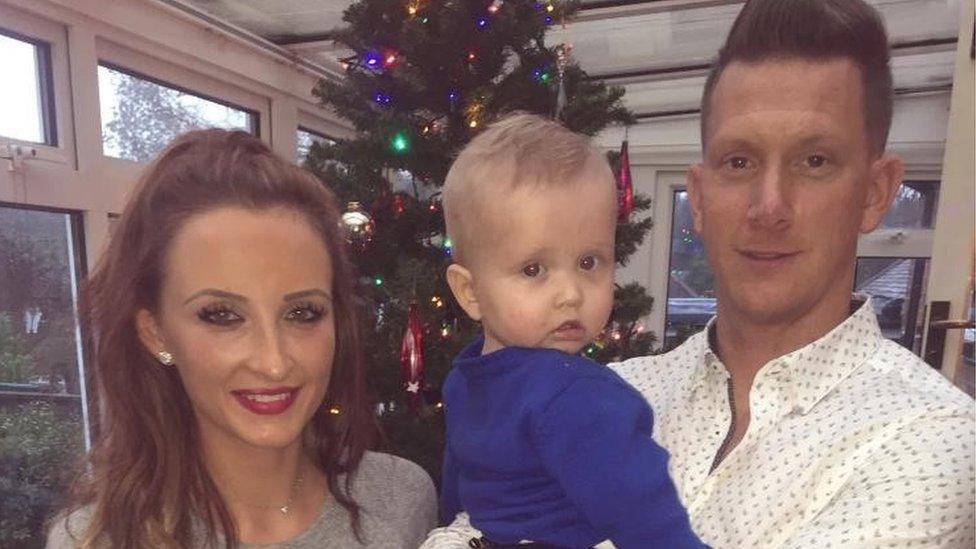
- Published14 November 2016
- Published13 November 2016

- Published13 November 2016
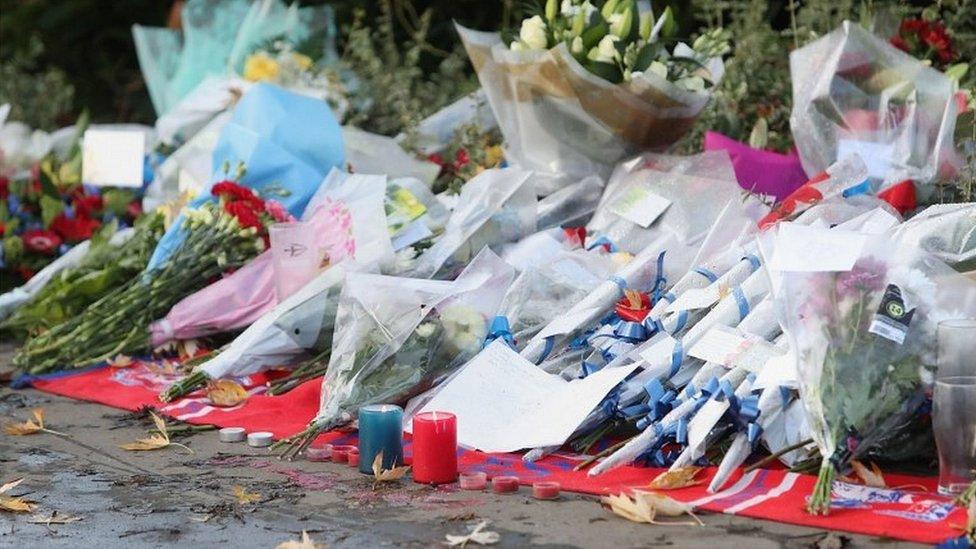
- Published12 November 2016
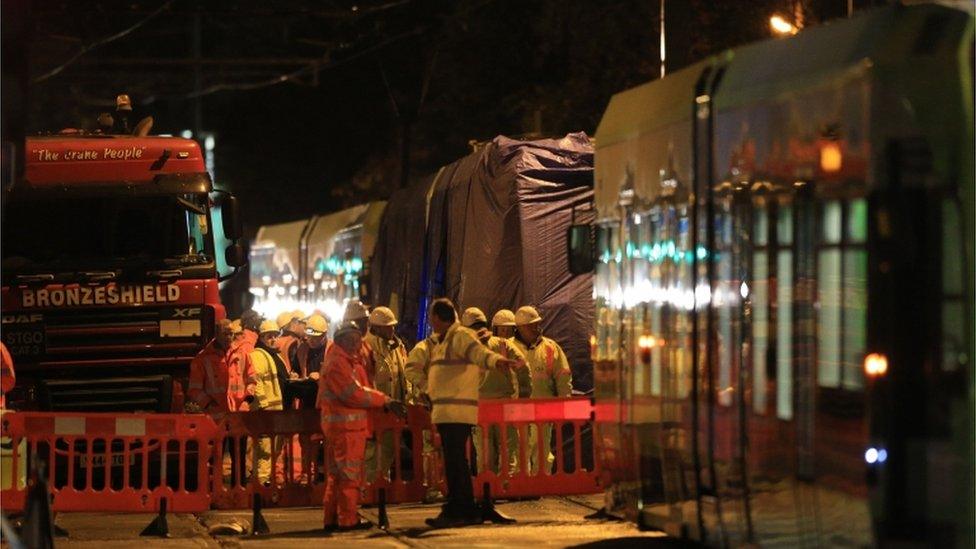
- Published11 November 2016
